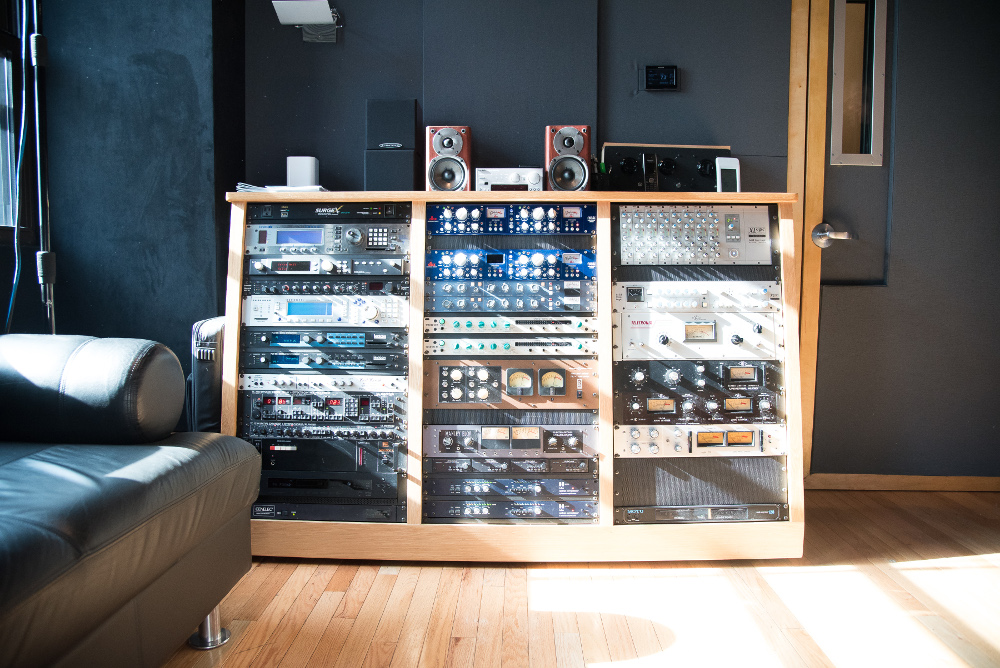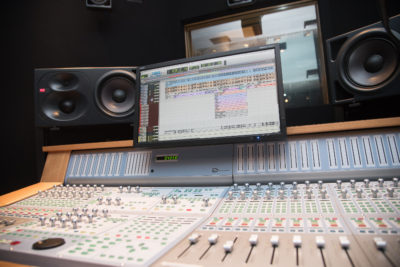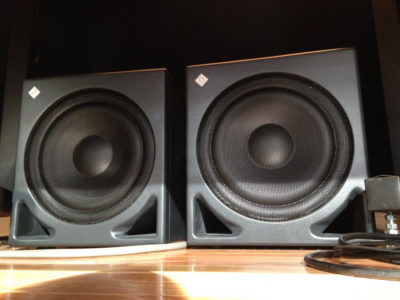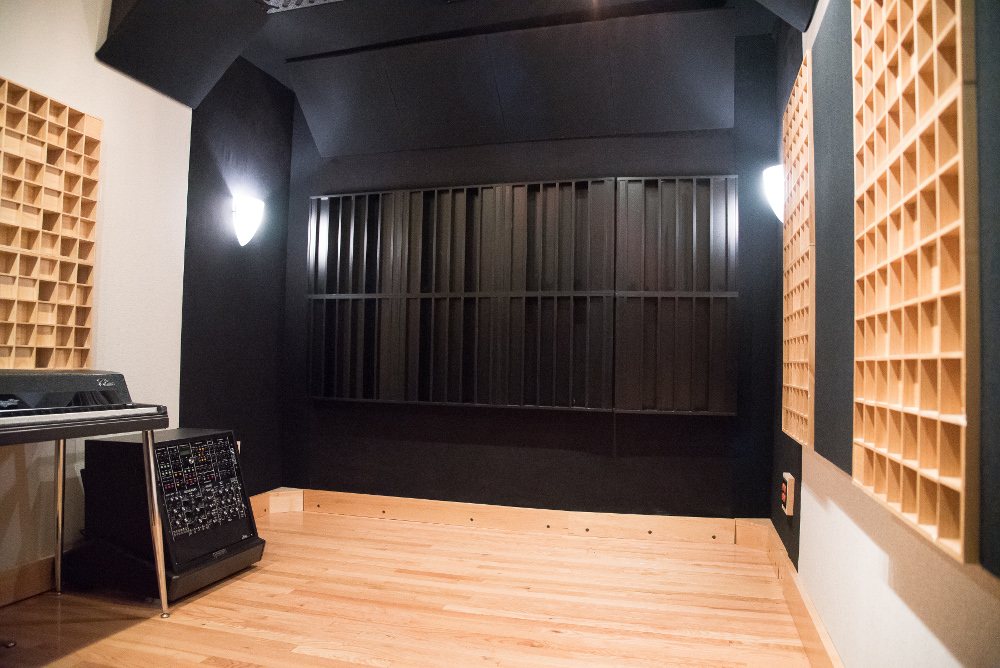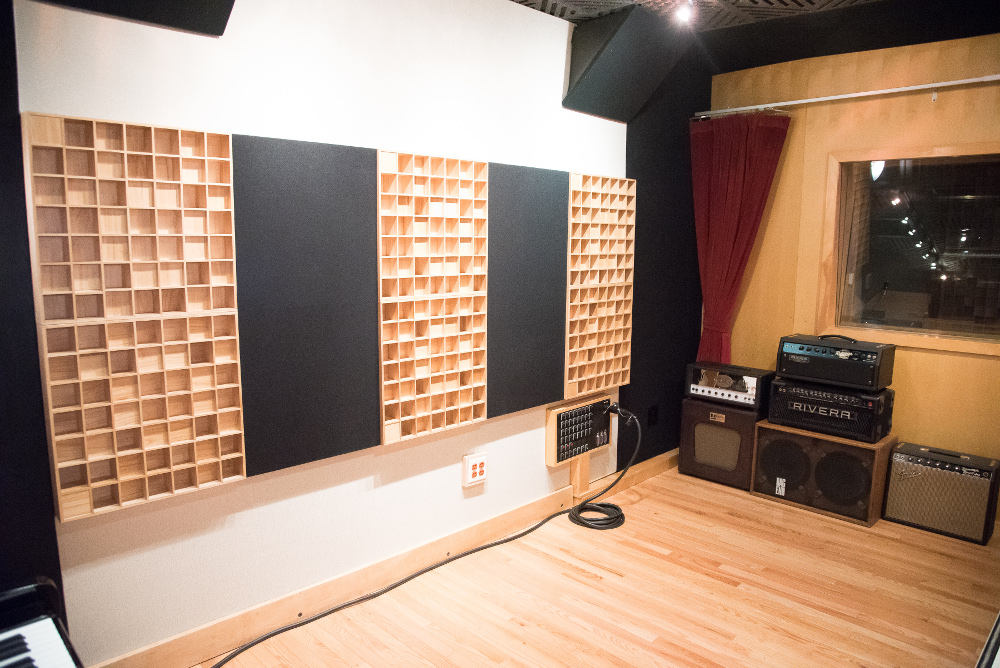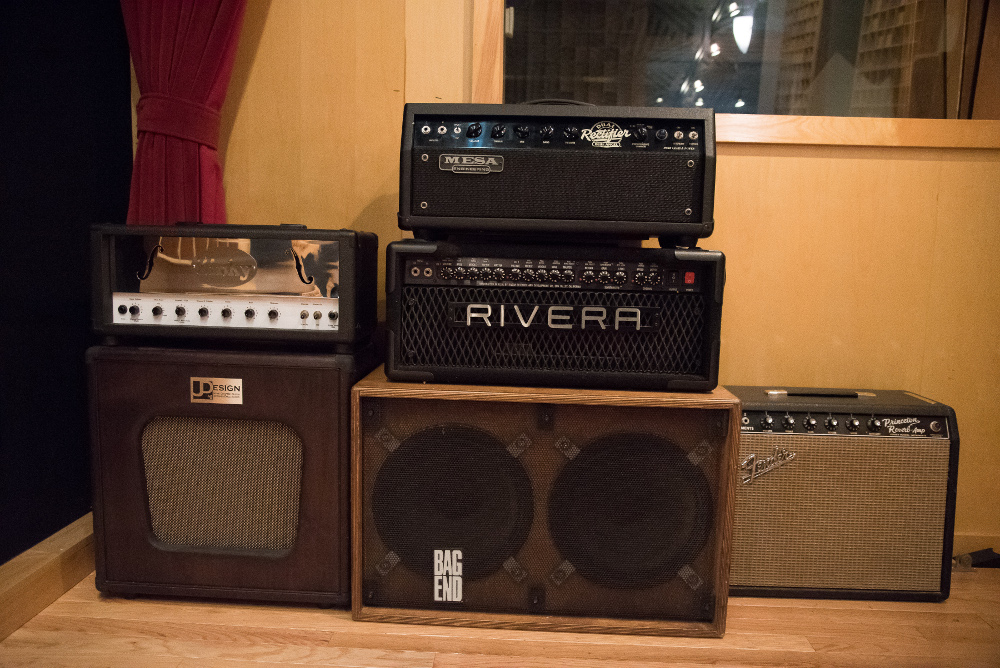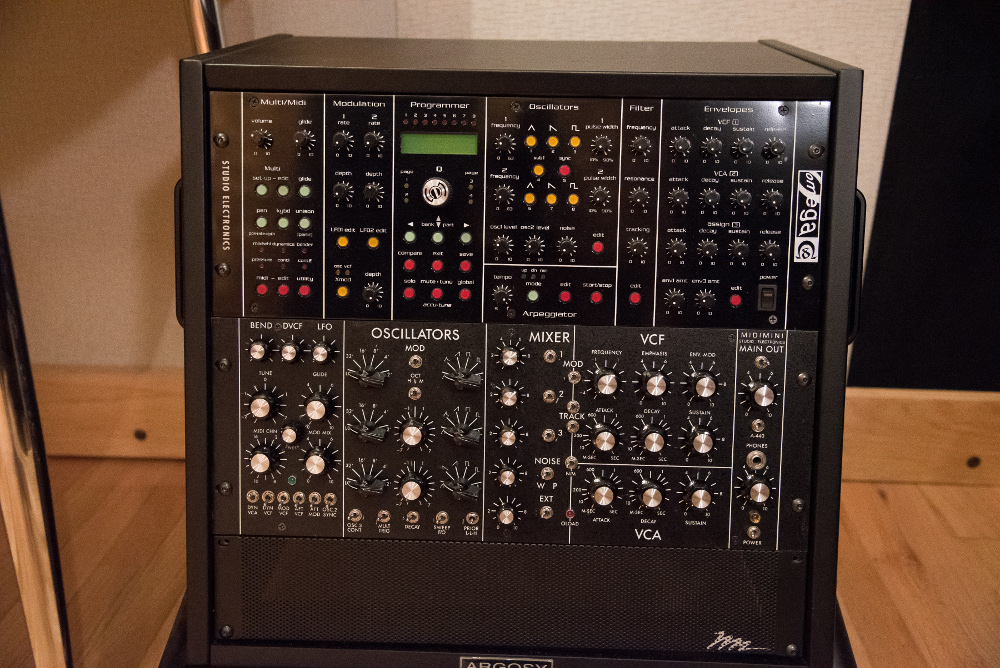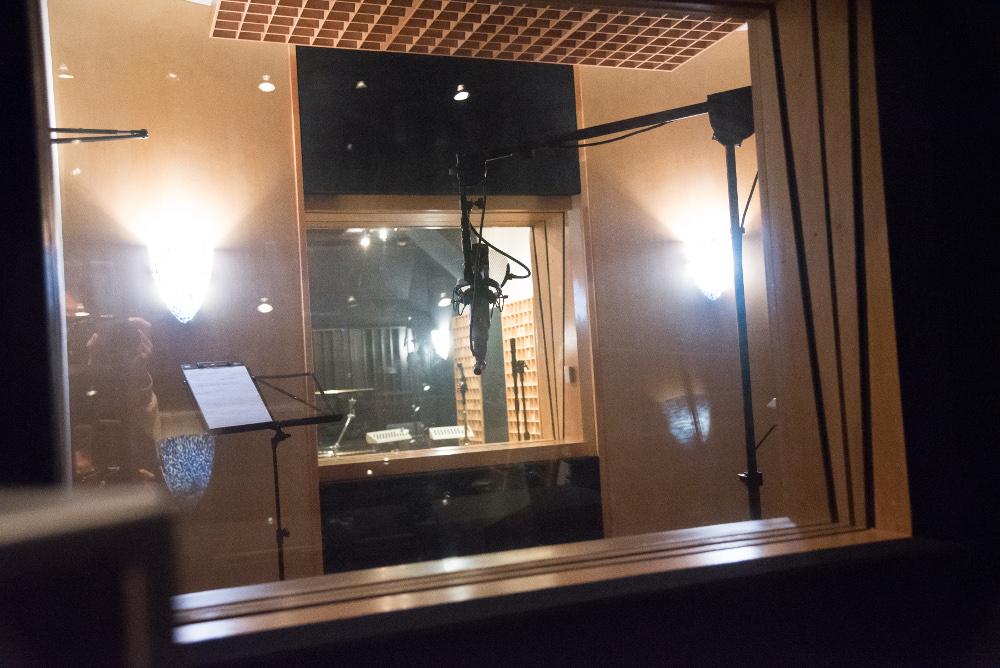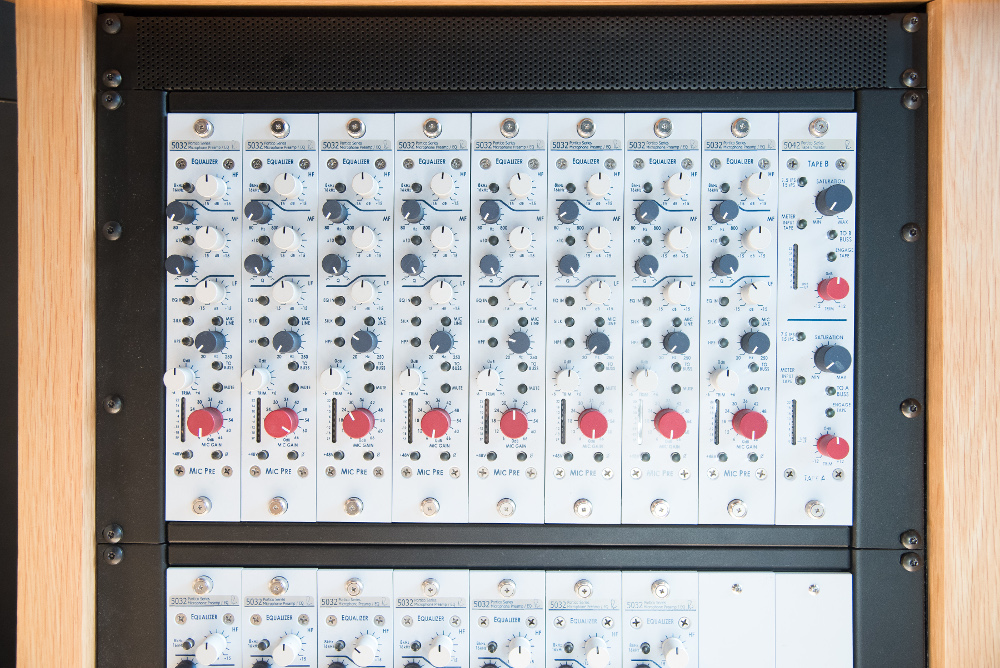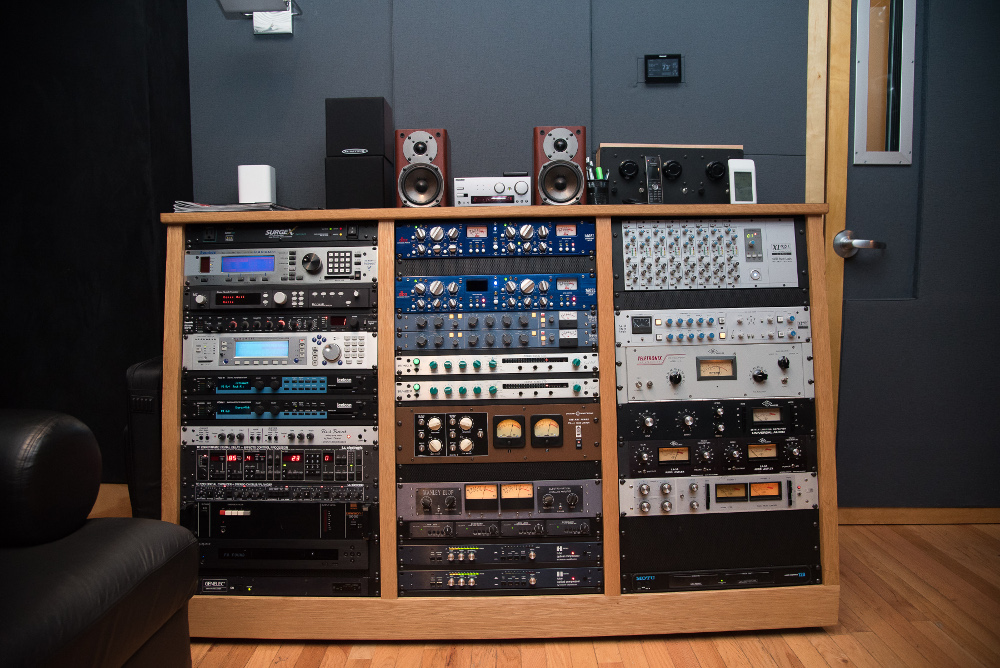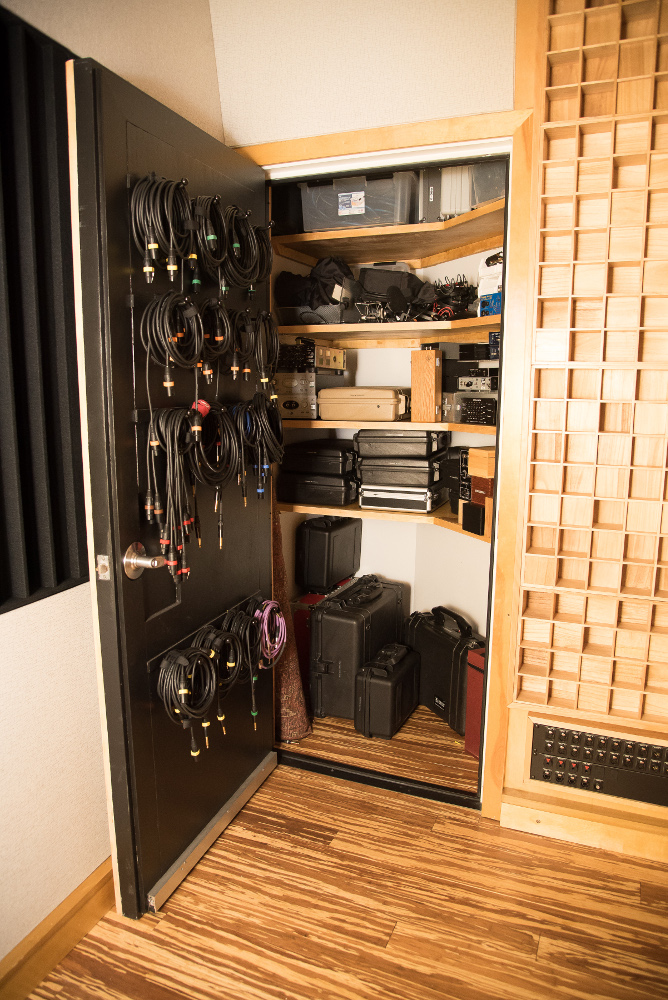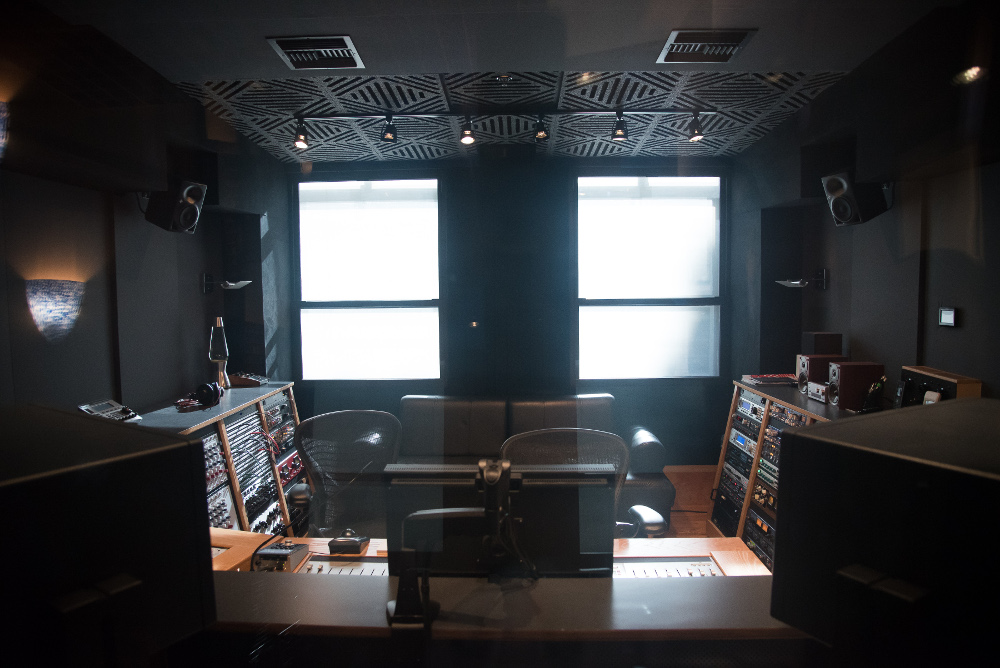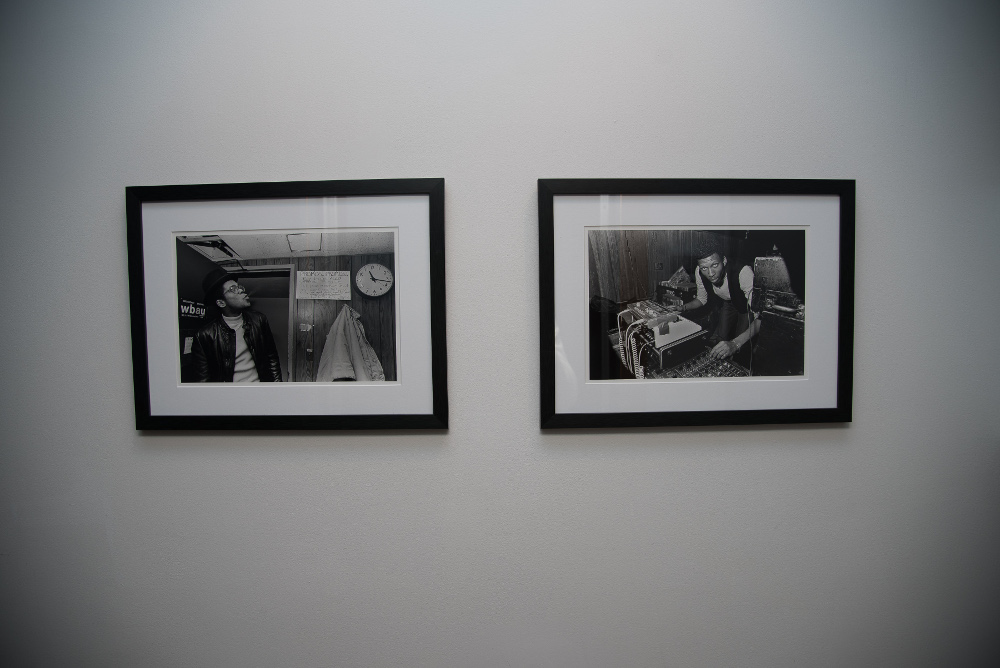Recording Studio Sweet Spot – Sound Generation, Union Square, NYC
Want in on a Union Square secret?
Named in the 1800’s for the convergence of Broadway and the former Bowery Road (now 4th Avenue) – that’s the “Union” – the area has grown to be a dynamic center of art, cuisine, and political protest. It’s the undisputed heart of NYC’s downtown, and private music production spaces abound, but curiously you have to search hard to find a commercial studio.
If you know where to look, however, you’ll discover a gem like Sound Generation, which has been in action since 2005 on 14th Street between 5th and 6th Avenues. The location of founder Andrew Mittelman’s recording and mixing facility is massively convenient for clients from every direction, but that’s not the sole source of his success.
In fact, Mittelman has applied some intense technical proficiency to this creative space, which has serviced everyone from Sara Bareilles and Leslie Odom Jr. to Sony Music and “This American Life.” Over the years, he’s built a fully networked “no limits” environment for artists, producers and composers to play in.
For mixing and tracking, his gathering of Rupert Neve Modules makes for a different kind of 32-channel console. And backing up the workflow is a powerful but precise double-sub system that takes critical listening to an elite level – see why his .1 gives 110%.
Want a serious critical listening situation? Listen without fear here. And what can you do with dual subwoofers? Mittelman has it worked out: See why his .1 gives 110% to the low end.
Facility Name: Sound Generation
Website: http://www.soundgeneration.net
Date of Birth: April 2005
Location: Manhattan, Union Square/West Village
Neighborhood Advantages: 14th street is the hub of downtown Manhattan, easily accessible from all boroughs by public transportation, from New Jersey by Path train or by car via the west side highway or FDR drive. Union Square park is down the street from the studio and there are plenty of places to eat or have coffee – everything from Popeye’s or Murray’s Bagels to the Blue Water Grill. Even the occasional protest march!
Facility Focus: Tracking, Mixing, Audio Post
Mission Statement: Sound Generation is well suited for recording vocals – singers or spoken word including voiceover and narration. We welcome and have worked with musical groups or solo artists in a variety of styles including pop/rock, hip hop, jazz, classical.
The studio has a very comfortable vibe and is available 24 hours, allowing for night sessions. The facility is available for hire with an engineer as well as for incoming engineers or producers who need a place to work with their clients to provide a top quality recording, mixing and monitoring environment. Attention to detail is emphasized in the design of the studio and the equipment as well as in the finished product.
Clients/Credits: Sara Bareilles, Leslie Odom Jr., Maya Beiser, Eve Beglarian, Fred Shehadi, Yaron Gershovsky, Kobie Powell, Keith Patchel, Tom Heasley, Batillus, Car Bomb, Shiner Massive Soundsystem, Sony Music, Slash Records, Vendetta Records, KCRW: Morning Becomes Eclectic, This American Life, ASPECT: The Chronicle of New Media Art, Snorri Bros
Recorded Here:
Seriously – This American Life, Sara Bareilles, and Leslie Odom, Jr.

Maya Beiser – Almost Human
http://www.mayabeiser.com/music/almost-human/
Batillus – 12” EP
https://batillus.bandcamp.com/album/batillus-whitehorse-split-12
Batillus – Concrete Sustain
http://www.batillusdoom.com/music/
Key Personnel: Andrew Mittelman (engineer)
System Highlights:
Pro Tools HD 12 w/ HDX 3
D-Command 24 console
DAD AX32 (2) w/ madi + AES option cards
Waves DiGiGrid DLI, IOC, MGO (2), SGS Server
Mytek 8×192 (6)
Trinnov MC Processor
Colin Broad TMC-1
Rupert Neve Designs 5032 (16), 5012 (4), 5033 (8), 5043 (4), 5042, 5014, 5059 (2), Master Buss Processor
The (2) DAD AX32 serve as the digital routers and master clock for the entire studio: 128 I/O via HD connectors to Pro Tools, 128 I/O via MADI to the DiGiGrid network (MGO units), 48 AD/DA via MADI to the Mytek 8×192 (soon to be replaced with the new Mytek 16 channel AD/DA units which will be released in 2017), and 48 digital I/O via AES/EBU connections to all reverbs/effects as well as computer audio (Mutec MC-1.2 <> Mutec MC-6) and ISDN.
The connection via the Mutec USB/AES and sample rate converter ensures that stereo audio can always be monitored through the computer’s coreaudio driver regardless of the sample rate of the DAW. Need to check something in iTunes, playback a file from the drive or the internet, watch a video on YouTube? It is always available on a dedicated input.
The (2) AX32 and (1) DiGiGrid DLI are connected to HDX cards 1-3. When using Pro Tools the DLI is primarily for StudioRack plug-in processing on the server, allowing all Waves plugins to be used in DSP, low latency mode regardless of Pro Tools session settings.
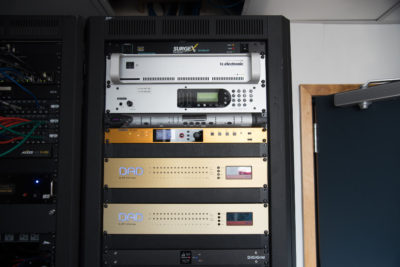
DAD routing and master clock, plus Waves DiGiGrid are the nerve center of a facility with extreme networking.
The DLI also provides an additional 64 I/O from native audio DAW or Virtual Instruments running on a studio computer or any computer in the studio network. This offers a lot of possibilities. A session that comes into the studio on another DAW can stream as many as 128 channels directly into Pro Tools (when combined with the MGO to AX32 connections) either running on a studio computer or a guest machine.
There is no need to import and export files to/from Pro Tools, the two transports can lock and run in sync. Especially useful for Logic, Cubase, Digital Performer, Ableton Live. This allows composers and producers to make additional adjustments to the project while working in their familiar software environment, or a performer can have the VI instruments or other software in the studio on a laptop while recording.
The DiGiGrid IOC audio interface is used for talk and listen mic inputs, dual headphone outputs in the control room, a 7.1 surround input from the blu-ray player for reference material or surround decoded streaming content, output to a bookshelf stereo system in the control room for additional monitor reference and also 16 channels of digital I/O with SRC. The “legacy” effects units such as Lexicon PCM 81/91, Kurzweil ksp8, Princeton Digital 2016 which operate at 48kHz or less are still connected digitally to the DAW regardless of the session sample rate. Unlike most digital SRC which is only on the input, the IOC has SRC in both directions so the equipment stays at 48kHz no matter what.
In addition, when using the DiGiGrid network with SoundGrid as the coreaudio driver of a native DAW the entire analog and digital I/O of the studio is available, as well as the low-latency mixing, monitoring and plugins. This means an outside engineer or producer can work the way they like with any software and be insured full access to all of the equipment in the studio. No more limitations from using the HDX cards as coreaudio.
The use of the Rupert Neve Designs system provides the sound of a modern analog console while maintaining the flexibility, recall and control that a digital system and the D-Command console provide. 24 channels of mic preamplification with 3 and 5 band equalization, 8 channels of compression and 32 channels of analog summing with the option to add Neve’s unique “silk” texture to individual channels as well as to the mix buss permit many creative possibilities both for recording and mixing.
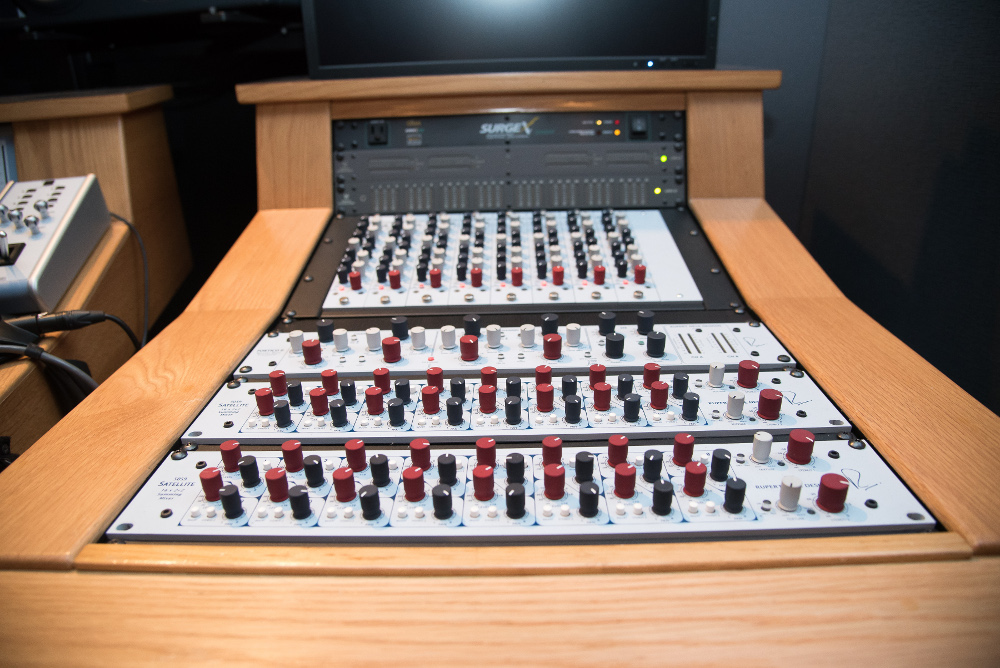
A comprehensive Rupert Neve Designs system, including 32 channels of analog summing, allow for a different kind of console.
Major Monitoring: Klein + Hummel/Neumann monitoring is provided for both stereo and surround. KH O410 are the stereo mains and (5) KH120 are permanently mounted for 5.1 with the option of 2 additional KH120 for 7.1. The (2) KH810 subwoofers can be used as stereo bass extension for the main monitors and also for the .1 channel when mixing in surround.
All monitoring is done in the digital domain using the AX32 with the Pro|Mon option installed. The Trinnov MC Optimizer corrects frequency, phase, amplitude, position and delay and also is the bass management system with the option to cross-over the main stereo speakers to the subwoofers. The AX-32 routing is unique in that it allows the Trinnov optimizer to seamlessly integrate with the outputs to the monitors as an insert. All processing remains digital until the DA converter of the Mytek which is directly connected to the monitor inputs. The Trinnov features a 3D microphone with four heads that analyzes each speaker from different positions in the room. Presets can be saved to optimize the mixing position(s), the couch in the back or an average.
The Colin Broad TMC-1 is the controller and has metering as well as extensive control over sources, speaker mute/solo, cue outputs including (2) talkback and (2) listenback mics. Different templates can be configured and saved for various inputs from multiple surround sources with summing, native DAW, Pro Tools, ISDN/Source Connect, even phone dial-ins using the studio SIP phone. The Trinnov processor can be toggled on or off as an insert which is pre-fader and before output level changes. Another advantage of the TMC-1 is that it emulates an X-Mon and is connected to the D-Command. The monitor section of the console is completely functional and controls the TMC-1.
Overall the monitoring system is of the highest quality, with multiple sources of different types available instantly. Many options exist to create cue mixes for the artist, including remote listenback from another studio via ISDN or source-connect. The analog signal path to the monitors is as short and simple as possible.
Double Bass: The Klein and Hummel O410 have a great range, extending to 30 Hz, and are a 3-way system.
My goal in crossing over each speaker between 30-60 Hz with a dedicated subwoofer is to create a 4-way system. Thus my stereo mains can be 4-way instead of 3-way, rather than summing the high-passed signal of both left and right channels in a mono sub. Bass frequencies are theoretically omni-directional, which would suggest a mono summed subwoofer is sufficient. However I feel that the overall system sounds better with the dual outputs. For surround mixing the .1 signal is fed to both subs, where the possibility exists to optimize the position of each instead of only one point.
Live Live Live: The live room is 17’ x 10,’ and can accommodate up to a five-person ensemble. I have recorded cello, drums, upright piano, electric guitars and bass as well as horn and string sections – they all shine in the room.
The walls consist of a mixture of RPG 2D and 3D diffusion as well as absorption behind fabric walls and wood surfaces to create an even balance across the frequency spectrum. The result is moderately dead reflections, but without the phase issues common to smaller rooms.
Other Distinguishing Characteristics: Wide variety of musical instruments, including upright piano, Rhodes, synthesizers (vintage and new), DW Drum kit, guitars and basses and amplifiers/speaker cabinets
Excellent microphone collection
Surround sound monitoring and mixing
High quality outboard gear
Use of Rupert Neve Designs modules to create a 32 channel hybrid mixing environment – basically a 5088 console without the console
The building is on fire, you only have time to grab ONE thing to save, what is it?
Telefunken ELAM 251, because it is the easiest to carry.
Rave Reviews: Clients tell us they love the vibe and sound quality of Sound Generation.
Dream Session: I would love to work with Daniel Lanois! He is one of my heroes as a producer, engineer and musician.
— Andrew Mittelman, Sound Generation
Please note: When you buy products through links on this page, we may earn an affiliate commission.







